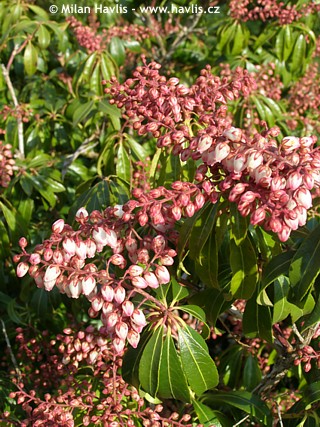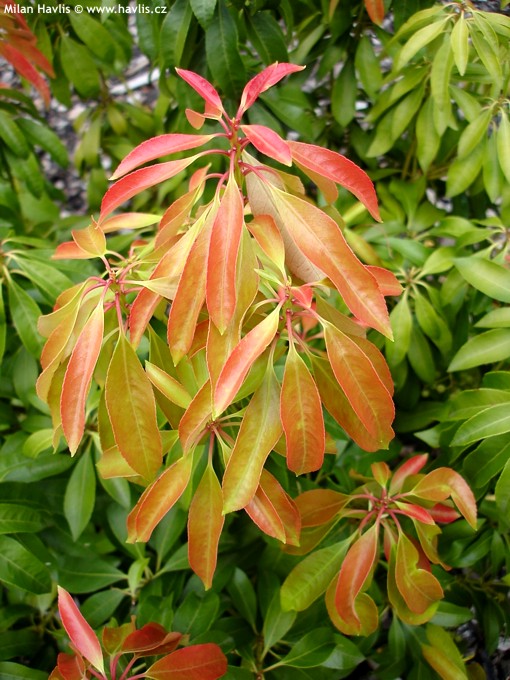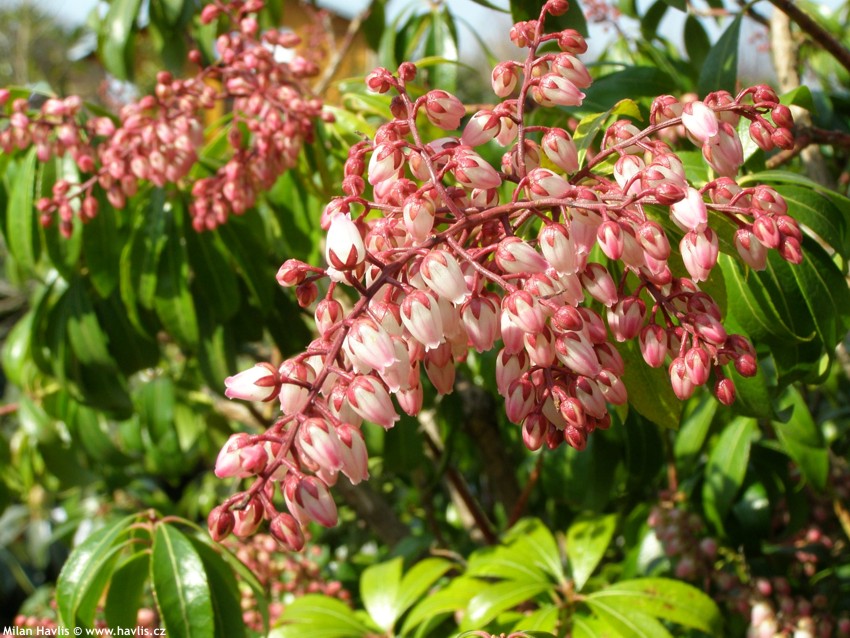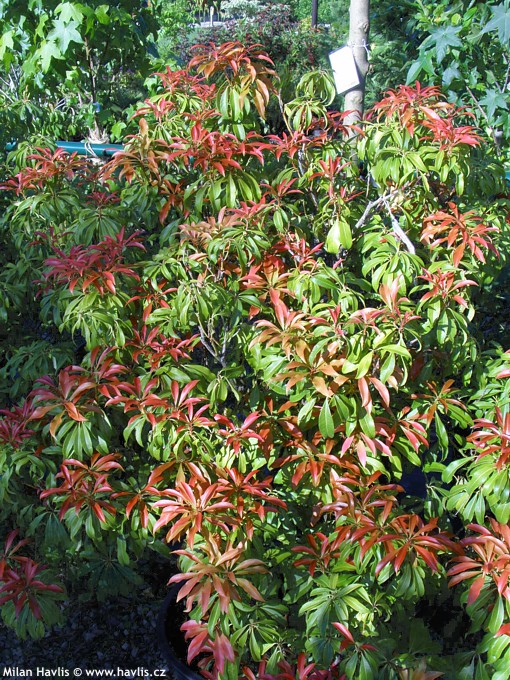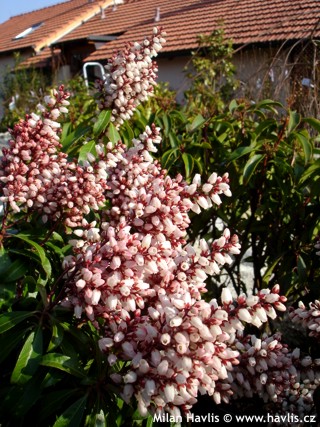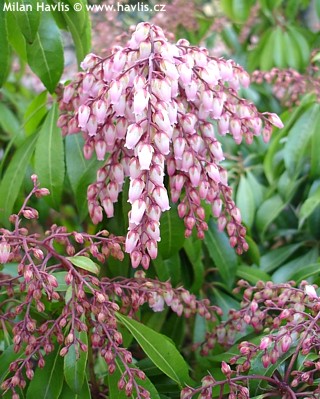Pieris japonica 'ROSALINDA' lily-of-the-valley shrub
Pieris
Lily-of-the-valley shrubs are very popular ericaceous plants with attractive foliage and abundant flowering.
Rosalinda is an elegant lily-of-the-valley shrubs variety from Germany. Its flower colour and leaves are almost identical to another variety called Valley Rose, but this one has more upright and denser flower racemes that do not weep like those of Valley Rose. The individual flowers are fragrant, urn-shaped, white and pink-flushed at the bottom, opening up from rosy-red buds. The pink flush completely disappears when the blooming is in its peak but the calyxes and stalks remain rich red which brings a good contrast with the snow-white flowers. After pollination they are followed by numerous seed-pods which are best dead-headed to save plant’s vital energy.
Evergreen leaves are elliptic, mid green and glossy, slightly curved down. New shoots are bright carmine red, changing to coppery orange, maturing to rich green after 2-3 weeks. New leaves grow two or sometimes three times a year: first after flowering, secondly in midsummer, and yet again in early to mid autumn if the weather is warm. Rosalinda grows moderately when young, slowing down with age, into a compact shrub nearly as wide as tall. No pruning required. If you want to trim it do so immediately after flowering which is usually end of April.
Ericaceous plants require soil that is light, on the acid side, and constantly moist (not wet). If your garden soil is too heavy do not dig a deep hole but make a shallow and wide bed topped up with a good mixture of peat, fine bark chips, and leaf (forest) litter. Keep the soil moist by mulching. Slow-release fertilizers are advised. Expected hardiness is about -27°C (USDA zone 5b).
Last update 11-02-2012

































